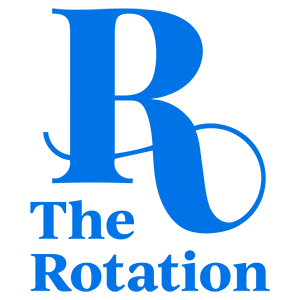Problem: patients look to health professionals for sound nutrition advice, but most health professionals are not adequately trained to provide it.
Perhaps you are a faculty member who needs to incorporate nutrition into an already packed curriculum. Or an educator who realizes that the current content coverage does not provide students with the practical nutrition skills they will need as clinicians.
Or maybe you’re a medical or nursing student—or a pharmacy, NP, or PA student—with a ‘deer in the headlights’ look when your patients mention the latest weight loss diet in the news or ask what they should eat following a new diagnosis of diabetes or hypertension.
Providing nutrition care to patients is a fundamental skill for doctors and other health professionals, but it has never had a solid place in the medical school curriculum.
Providing nutrition care to patients is a fundamental skill for doctors and other health professionals, but it has never had a solid place in the medical school curriculum.
There are many barriers to providing nutrition education in medical schools (like a shortage of faculty trained in nutrition and a crowded medical school curriculum). Required nutrition contact hours have lost ground or remained unchanged at best over the past few decades.
Solution: an evidence-based nutrition curriculum that dishes up practical, expert guidance that can be applied to clinical practice.
Enter OnlineMedEd’s new Food as Medicine nutrition curriculum — 15 online learning modules to quickly bring you or your students up to speed with how to handle some of the most commonly encountered nutritional concerns in your patients.
Bite Sized & Easy to Integrate
The foundations of nutrition science in medicine are broad and sweeping, and evolving nutrition recommendations and changing guidelines make it tough for even seasoned nutrition professionals to keep up with all the changes.
These lessons will enable institutions teaching healthcare professionals to fill critical gaps in knowledge and skills, without the need for faculty with in-depth experience in all aspects of nutrition. And graduates who enter practice realizing that there are gaps in their nutrition training can quickly and easily build a solid foundation for their nutrition care, and home in on the topics they need the most.
Each lesson topic is narrowly focused with the key points reviewed in a 15-minute video lecture. The accompanying notes set are where you’ll find more details, tables, and practical tips, still presented in a streamlined fashion.
Stripping away extraneous or redundant topics, you are left with the essence of clinical applications for frequently encountered conditions that will respond to nutrition intervention. To round out the learning, challenge questions and flashcards reinforce the main points and offer practice opportunities to apply the material.
Nutrition is a multidisciplinary topic that can be integrated across the medical school curriculum, and the bite-sized format will give faculty the most options for implementation.
If it is integrated and required, online learning can increase the number of hours of nutrition education students encounter and move a medical school closer to meeting the minimum 25 hours recommended by the National Research Council way back in 1985.
Streamlined and practical
Each lesson follows the targeted and focused PACE model: Prime, Acquire, Challenge and Enforce. Each note set primes the learner with the essence of nutrition science needed for that topic.
The streamlined summaries are narrowly focused to provide just enough background to fully digest the application of nutrition to the topic at hand.
The videos focus on the core concepts needed to treat the patient in the clinic or on the wards. The learner won’t get bogged down in biochemistry, pathophysiology, or fall deep into a research hole.
They demonstrate how to briefly assess a patient’s diet and physical activity level, how to use techniques of behavioral counseling to help patients make difficult lifestyle changes, and also provide a solid foundation in nutritional science and healthful dietary patterns.
How can one clinician adequately and accurately reinforce the lifestyle guidance that the patient is receiving from other health professionals? How can you counteract the hordes of misinformation the patient is exposed to online?
Sometimes the patient needs in-depth assessment and guidance from a registered dietitian nutritionist—the healthcare professional trained to provide detailed nutritional diagnostic, therapy, and counseling services.
But patients look to all medical providers as a reliable source of nutrition information, and there remains a pretty big gap what should happen and what actually is happening with regard to nutrition care. And what about when a patient is unable to see a dietitian? Or if the patient urgently needs nutrition guidance until they can get in to see a one?
How can one clinician adequately and accurately reinforce the lifestyle guidance that the patient is receiving from other health professionals? How can you counteract the hordes of misinformation the patient is exposed to online?
Because there isn’t a lot of time to devote to lifestyle with each patient, the lessons zero in on what interventions will give you the biggest results in the least amount of time.
Up-to-date and evidence-based
Medical nutrition education for health professionals should demonstrate how nutrition can be used in clinical practice to recognize, prevent, and treat nutrition-related illnesses and chronic disease, such as obesity, diabetes, hypertension, anemia, and how proper nutrition can change health outcomes.
But oftentimes the responsibility for teaching some nutrition concepts to students falls on faculty without expertise in nutrition. Or the faculty member knows where all the vitamin co-factors in the Krebs cycle are, but does not know how to guide patients to prevent birth defects with appropriate nutrient intake or what the relationship between dietary lipids and blood lipids are. What are nutrients of concern in a vegan patient? What are red flags for eating disorders in a teen with amenorrhea?
Developed by a physician and a registered dietitian nutritionist, the Food as Medicine nutrition series contains evidence-based recommendations culled from current practice guidelines and dietary recommendations.
Helps Meet LCME Standards
The curated topics span essential components of nutrition needed to prepare physicians to adequately address their patients’ nutrition status, enveloped in LCME standards 7.1, 7.2, 7.5, 7.6, 7.8, and 7.9.
The series begins by jumping right in and giving the viewer a solid foundation in the current dietary and physical activity guidelines and recommended eating patters for health and chronic disease prevention.
Next, viewers will learn how to aid patients in making difficult behavior and lifestyle changes, and how to quickly and efficiently assess a patient’s diet, physical activity, and supplement use—skills that are often not explicitly taught but are so crucial to being an effective clinician.
Developed by a physician and a registered dietitian nutritionist, the Food as Medicine nutrition series contains evidence-based recommendations culled from current practice guidelines and dietary recommendations.
The role of nutrition in the prevention and treatment of obesity, diabetes, hypertension, hyperlipidemia, and chronic kidney disease are covered in separate sessions, with a focus on the evidence-based treatment that can be applied immediately in clinical settings.
Because growth monitoring is so critical in evaluating the nutritional status of children, there is a separate lesson on pediatric obesity. Finally, three critical stages of the lifecycle with unique nutritional concerns are included: geriatrics, pre-conception, and pregnancy.
Food as Medicine—just what the doctor ordered.



